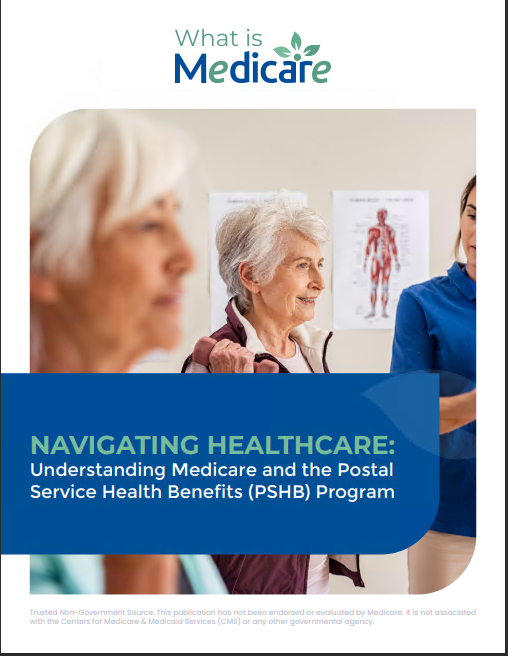Key Takeaways
-
Medicare may look like alphabet soup, but each part—A, B, and D—has a distinct purpose that helps cover different types of healthcare services.
-
Understanding what each part does helps you avoid late penalties, unexpected costs, and gaps in your coverage.
Alright, Let’s Talk About These Letters
You’ve probably heard folks mention Part A, Part B, and Part D like they’re part of some secret Medicare code. The truth? They’re just different pieces of the overall Medicare puzzle. And if you’re feeling a little lost trying to figure them out, you’re not alone. Let’s break it down so you actually know what each part covers and how it fits into your healthcare needs.
What Exactly Is Medicare?
Medicare is a federal health insurance program for people 65 and older, younger individuals with certain disabilities, and those with End-Stage Renal Disease. It’s made up of different “parts” that cover specific types of services. You can think of it like building your own healthcare package by choosing the pieces that make the most sense for you.
What’s the Deal with Part A?
Part A is known as hospital insurance. It mostly takes care of inpatient services, meaning care you get when you’re admitted to a hospital or skilled nursing facility.
Here’s what Part A typically covers:
-
Hospital stays (including semi-private rooms, meals, and general nursing)
-
Skilled nursing facility care (following a hospital stay)
-
Hospice care
-
Some home health care services
What it doesn’t cover:
-
Long-term custodial care
-
Private-duty nursing
-
Personal care like bathing or dressing (if that’s the only care you need)
You generally don’t pay a monthly premium for Part A if you or your spouse worked and paid Medicare taxes for at least 10 years (40 quarters). But you do pay a deductible for each benefit period, and there are coinsurance costs if you stay in the hospital longer than 60 days.
Part B—Your Everyday Medical Needs
Part B is medical insurance. It handles the everyday stuff—like doctor visits, preventive services, lab work, outpatient care, and durable medical equipment.
Services covered under Part B include:
-
Visits to your doctor or specialist
-
Outpatient services (like X-rays, MRIs, and same-day surgeries)
-
Lab tests and blood work
-
Preventive care (think flu shots, cancer screenings, wellness visits)
-
Durable medical equipment (like walkers or wheelchairs)
You pay a monthly premium for Part B. In 2025, the standard premium is $185. You’ll also have to meet a deductible ($257 for the year) and usually pay 20% of the Medicare-approved amount for most services.
Part D—Because Prescriptions Matter
This part covers your prescription medications. It’s provided through private insurance companies approved by Medicare, but it’s still considered a core part of your overall Medicare coverage.
Part D typically covers:
-
Most outpatient prescription drugs
-
Vaccines not covered by Part B
-
Brand-name and generic drugs (with varying cost tiers)
Plans may vary, but there’s a federally set structure that all of them follow. In 2025, there’s a $2,000 cap on your out-of-pocket drug costs. That means once you’ve spent $2,000 for covered prescriptions, your plan will pay 100% of your costs for the rest of the year.
Why You Should Care About Timing
If you don’t sign up for Parts A, B, and D when you’re first eligible, you could face late penalties—and those penalties stick around.
Here’s when you can enroll:
-
Initial Enrollment Period (IEP): 7-month window around your 65th birthday (3 months before, the month of, and 3 months after).
-
General Enrollment Period (GEP): January 1 to March 31 if you missed your IEP.
-
Special Enrollment Period (SEP): If you delayed enrollment because you had other coverage (like from an employer), you get a special window after that coverage ends.
Missing the right window means you could end up paying extra for life. For example, the Part B late enrollment penalty increases your premium by 10% for every 12-month period you were eligible but didn’t sign up. Ouch.
Can You Skip a Part?
Technically, yes. You don’t have to enroll in all parts—but skipping them might come back to bite you. For instance, if you opt out of Part B thinking you won’t need doctor visits soon, you may end up facing penalties and gaps in care later.
Here’s what people often do:
-
Enroll in Part A (since it’s usually premium-free)
-
Delay Part B if still working and have employer coverage
-
Add Part D when prescription costs start rising
But your best bet is to talk to someone before you make any big decisions.
What About Supplemental Coverage?
Parts A, B, and D don’t cover everything. There are still out-of-pocket costs like deductibles, copayments, and coinsurance. That’s where supplemental options come in.
You might consider:
-
A Medicare Supplement plan (also known as Medigap) to help pay out-of-pocket expenses
-
Or a Medicare Advantage plan (Part C), which bundles Parts A, B, and usually D into one plan
While we won’t dive into Part C in this article (because, let’s be honest, that’s a whole other story), just know that additional coverage exists to fill in some financial gaps.
Let’s Clear Up the Alphabet
By now, the pieces should start to feel a little more familiar. Here’s a quick cheat sheet to tie it all together:
-
Part A: Covers hospital stays and skilled nursing facility care
-
Part B: Covers doctor visits and outpatient services
-
Part D: Covers prescription drugs
Simple, right? Sort of. But at least now you know what each part is supposed to do.
Why This Stuff Matters in 2025
There are a few reasons why this year is especially important:
-
The out-of-pocket drug cost cap under Part D is a game-changer, especially for those who take multiple medications.
-
Medicare costs (like premiums and deductibles) have adjusted for inflation. Staying updated helps you budget smarter.
-
More people are working past 65, which affects when you should enroll.
You want to avoid penalties, minimize costs, and make sure you actually have the coverage you need. That’s the whole point of knowing how the different parts work.
What If You Need Help Figuring It Out?
This stuff can be confusing—and that’s totally normal. The good news is, you don’t have to sort it all out on your own. You can speak with a licensed agent who knows the ins and outs and can help tailor options to your situation.
Make Sense of Medicare—One Part at a Time
Getting clear on what each part of Medicare does puts you in control. You’ll avoid costly surprises, understand what you’re paying for, and know where to turn when your healthcare needs change. It doesn’t have to feel overwhelming—you just need the right info.
Need some extra guidance? A licensed agent listed on this website can walk you through your options and help make sense of it all.










